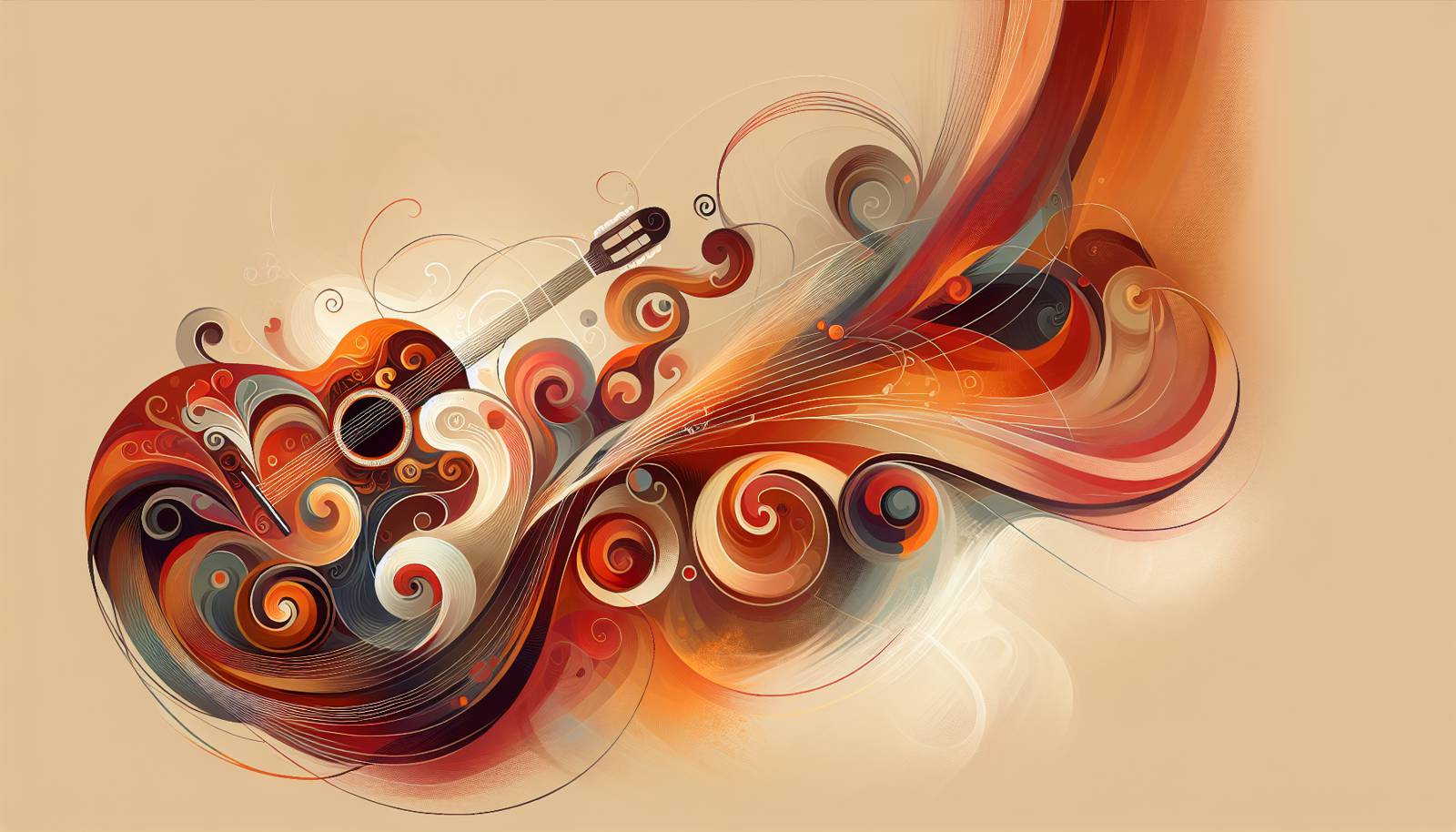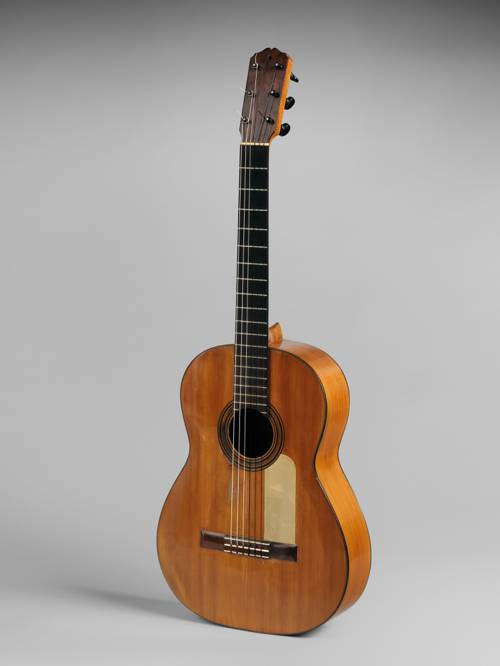
FAQ About The Role of Flamenco Guitar in Spanish Cultural Expression

What is the origin of Flamenco guitar?
The Flamenco guitar originated in Andalusia, a region in southern Spain, during the 18th century. It developed alongside the Flamenco dance and singing (cante), influenced by the cultural fusion of Andalusian, Arabic, Romani, and Sephardic music traditions. The guitar evolved to become an essential accompaniment in Flamenco music, underscoring the rhythms and adding expressive depth to performances.

How does Flamenco guitar differ from classical guitar?
Flamenco guitars differ from classical guitars in several ways. Flamenco guitars are typically lighter and have a lower string action to accommodate rapid fingerwork. They also use different types of woods, such as cypress or sycamore, which contribute to a sharper, more percussive sound. The playing technique for Flamenco involves distinctive finger strumming and tapping, which differs considerably from classical guitar techniques.

What role does the Flamenco guitar play in Flamenco performances?
In Flamenco performances, the guitar serves multiple roles. It acts as both a harmonic and rhythmic foundation, supporting the dancers with complex strumming patterns, and providing a melodic interplay with the singing. The Flamenco guitarist must be highly skilled, capable of following the spontaneous emotional highs and lows of the singers and dancers, making it an integral part of the ensemble.

Who are some of the most famous Flamenco guitarists?
Some of the most renowned Flamenco guitarists include Paco de Lucía, considered by many as a maestro who modernized Flamenco music by blending it with other genres. Others include Vicente Amigo, Tomatito, and Sabicas, each contributing unique innovations and interpretations that have pushed the boundaries of traditional Flamenco guitar playing.

How does Flamenco guitar reflect Spanish cultural heritage?
Flamenco guitar reflects Spanish cultural heritage through its deep roots in the traditions of Andalusia and its ability to convey passionate and rich expressions. It incorporates various cultural influences, including those from the Romani, Moorish, and Jewish communities, reflecting the historical diversity of the region. Flamenco guitar serves as a medium for storytelling, celebrating the Spanish spirit and its artistic legacy.

What are the typical techniques used in Flamenco guitar playing?
Flamenco guitar techniques involve a variety of unique strumming and plucking methods. Some well-known techniques include rasgueado (a rapid strumming with the fingers), alzapúa (a thumb technique for fast melodic lines), picado (fast scales using alternating index and middle fingers), and golpe (tapping the guitar body for percussion). These techniques allow for expressive performances full of dynamics and emotion.

How has the Flamenco guitar evolved over time?
The Flamenco guitar has evolved in both construction and technique. Originally, it was primarily an accompaniment instrument, but over time it gained prominence as a solo instrument. With innovations by artists such as Paco de Lucía, who incorporated jazz and classical elements, the Flamenco guitar has expanded its musical horizons while maintaining its traditional roots.

Are there different styles of Flamenco guitar music?
Yes, there are several styles or "palos" in Flamenco guitar music, each with its own rhythm and form. Some popular styles include Soleá, Fandango, Bulería, and Tangos. Each style has distinct characteristics and serves different functions within Flamenco, ranging from slow and expressive to fast and rhythmic.

What materials are typically used in the construction of a Flamenco guitar?
Flamenco guitars are traditionally constructed using lighter woods such as Spanish cypress for the body and spruce for the top, which helps produce a bright, percussive tone that complements the rhythm of Flamenco music. The fretboard is usually made from ebony, and the lighter construction offers better resonance for the fast, dynamic playing style typical in Flamenco.

What is the significance of the Flamenco guitar in modern Spanish culture?
The Flamenco guitar remains a significant symbol of Spanish culture, representing not only the traditional art form but also its evolution and contemporary relevance. It is celebrated in festivals and performances globally, attracting a wide audience for its emotive power and technical brilliance, thus continuing to inspire both musicians and listeners worldwide.

Can beginners learn Flamenco guitar, and if so, how?
Beginners can indeed learn Flamenco guitar, although it requires dedication and practice. Starting with basic Flamenco techniques such as rasgueado and simple strumming patterns is recommended. Many resources, including online tutorials, workshops, and books, provide guidance. It's also beneficial to listen and watch Flamenco performances to understand the music's unique rhythms and emotional nuances.

What are the challenges of learning Flamenco guitar?
Learning Flamenco guitar can be challenging due to its complex rhythms and fast, precise techniques. Mastering the various strumming and plucking techniques, such as rasgueado and picado, requires patience and continuous practice. Additionally, understanding the improvisational nature of Flamenco music and how to connect with its emotive intensity can be demanding for new learners.

How is Flamenco guitar typically tuned?
Flamenco guitars are generally tuned like classical guitars, in standard tuning E-A-D-G-B-e. However, some Flamenco pieces may use alternative tunings to achieve specific tonal qualities, enabling the guitarist to emphasize certain notes or ease the performance of particular passages. Nevertheless, standard tuning remains predominant in most Flamenco compositions.

What cultural influences have shaped Flamenco guitar?
Flamenco guitar has been shaped by a rich tapestry of cultural influences, including Romani, Arabic, and Jewish traditions, with each contributing distinct elements to its style and expression. The fusion of these cultures in the Andalusian region fostered the development of Flamenco as an art form, reflecting Spain's diverse historical and cultural heritage.

Is Flamenco guitar played solo or mainly as accompaniment?
While traditionally the Flamenco guitar was primarily used as an accompaniment to dance and song, it has also become a respected solo instrument. Innovators like Paco de Lucía showcased the guitar's full potential as a solo instrument, highlighting its expressive capabilities and expanding its repertoire beyond traditional accompaniment.

What is the significance of improvisation in Flamenco guitar?
Improvisation is essential in Flamenco guitar, allowing musicians to express personal emotion and creativity within the structure of different "palos" or styles. This spontaneous aspect of Flamenco adds to its dynamic performances, enabling guitarists to interact with dancers and singers in a unique, expressive dialogue that varies with every performance.

Are there any Flamenco guitar festivals in Spain?
Yes, Spain hosts several renowned Flamenco festivals, such as the Bienal de Flamenco in Seville and the Festival de Jerez. These events celebrate Flamenco music and dance, featuring performances by top Flamenco guitarists, dancers, and singers. These festivals provide a platform for both traditional and modern interpretations of Flamenco, attracting audiences from around the world.

How has globalization affected Flamenco guitar?
Globalization has expanded the reach and influence of Flamenco guitar, introducing it to international audiences and allowing for collaborations with artists from other musical genres. This cross-cultural exchange has led to innovative blends of styles, while simultaneously sparking renewed interest in preserving and promoting traditional Flamenco music globally.

What educational resources are available for learning about Flamenco guitar?
There are numerous educational resources available for learning Flamenco guitar, including online courses, instructional DVDs, and books. Renowned guitarists often offer masterclasses and workshops, both in-person and virtually. Additionally, music schools in Spain, such as the Cristina Heeren Foundation, offer specialized courses focused on teaching the art of Flamenco.

Why is Andalusia significant in the development of Flamenco guitar?
Andalusia is significant in the development of Flamenco guitar because it is the birthplace of Flamenco music. The region's multicultural history, encompassing influences from the Romani, Moorish, and Jewish communities, created a rich cultural tapestry that fostered the evolution of Flamenco. Andalusia's vibrant artistic traditions and social dynamics were instrumental in shaping the Flamenco guitar's distinctive sound and style.
